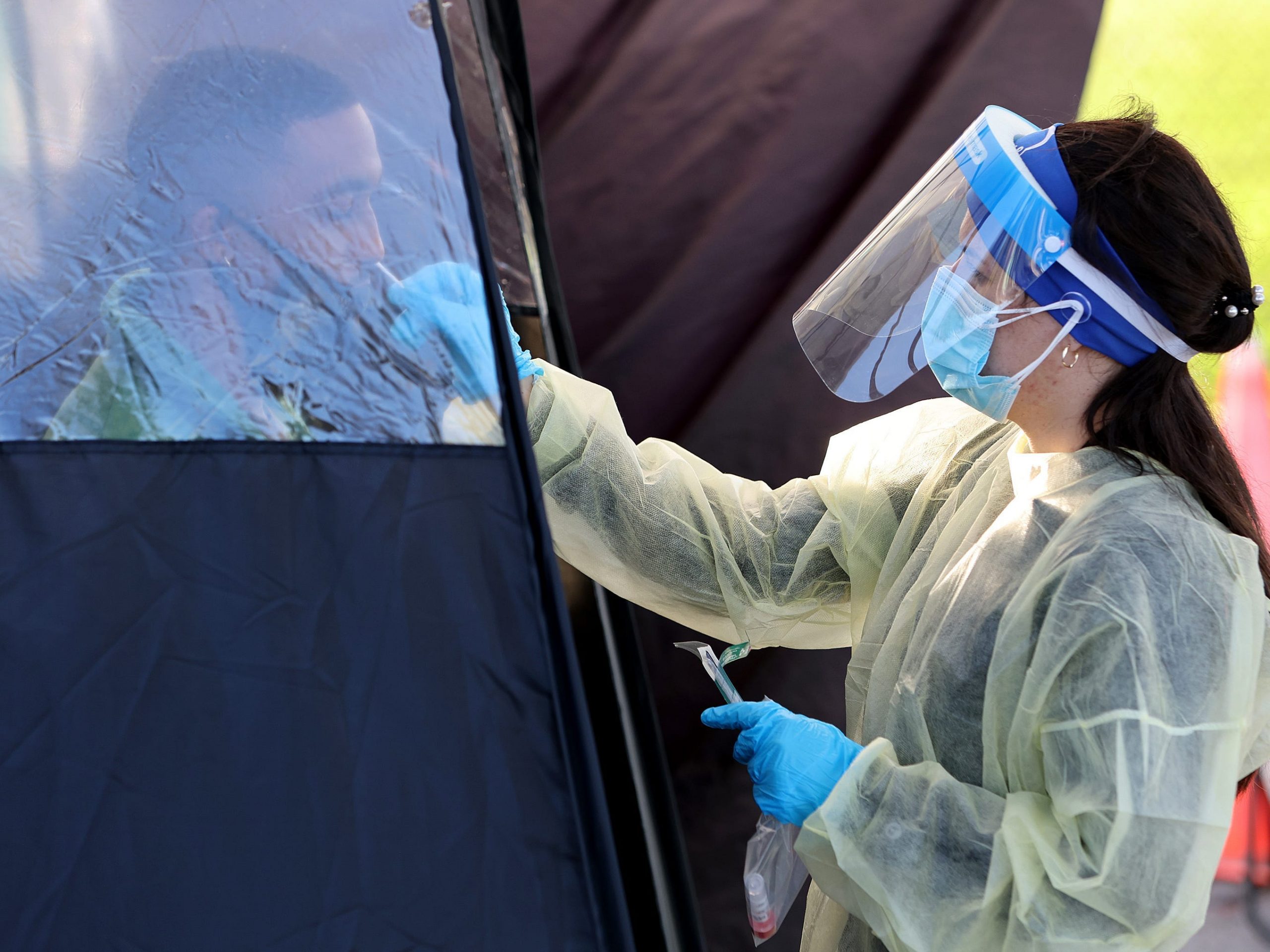
- Scientists believe the new Omicron coronavirus subtype BA.2 could extend the current wave of infections.
- Before BA.2 emerged, scientists were predicting a short, sharp Omicron wave.
- The BA.2 subtype appears to be about 1.5 times more infectious than the original Omicron, BA.1.
Scientists tracking a more contagious Omicron subtype have warned it could extend the current wave of COVID-19 infections, but said it probably won't cause another massive surge.
Previously, experts had predicted a short, sharp Omicron wave in which cases would fall as quickly as they rose.
The more contagious BA.2 subtype has emerged just as countries start to remove restrictions and restart their economies. Scientists are scrambling to work out its potential impact.
On Monday, Eric Topol, director at Scripps Research Translational Institute, said of the new BA.2 subtype: "Its increased transmissibility will prolong the Omicron wave in many places."
Topol cited data from countries in Europe and Asia where BA.2 has outcompeted BA.1 to become the dominant strain, as well as UK data released Thursday which estimated that the probability of household transmission was 30% higher for BA.2 than for BA.1, the original subtype.
—Eric Topol (@EricTopol) January 28, 2022
Health officials in Denmark — where almost all new infections are now BA.2 — said Wednesday that the subtype appeared to be 1.5 times more infectious than BA.1, according to early data.
Trevor Bedford, an affiliate associate professor in the Department of Genome Sciences at the University of Washington, agreed that BA.2 would cause "a substantially longer tail of circulation of Omicron" than would have existed with BA.1 alone.
However, he added that it "won't drive the scale of epidemics we've experienced with Omicron in January."
Bedford said that in the US, about 60% of the population hadn't caught BA.1. "This leaves the potential for a more transmissible Omicron virus to spread further in this fraction of the population," he said. Re-infection of individuals recovered from BA.1 may be possible, he added.
The average number of new reported COVID-19 cases in the US peaked at more than 800,000 a day on January 14, according to Oxford University's Our World in Data. Now, new reported daily cases are below 500,000, the data shows.
Vaccines could help blunt another peak driven by BA.2.
UK data released Thursday showed that two weeks after a booster, existing vaccines were 70% effective against symptomatic COVID-19 caused by BA.2. Meanwhile, three-shot protection against symptomatic BA.1 was 63%, the data showed.
A household study from Denmark, released Sunday, found that increased transmissibility of BA.2 over BA.1 wasn't seen in households that had received two or three doses. The study hasn't yet been published or scrutinized by other experts in a peer-review.
So far it's not clear if BA.2 is more deadly than BA.1. Early data from Denmark suggests hospital admissions haven't risen since the subtype took hold.

